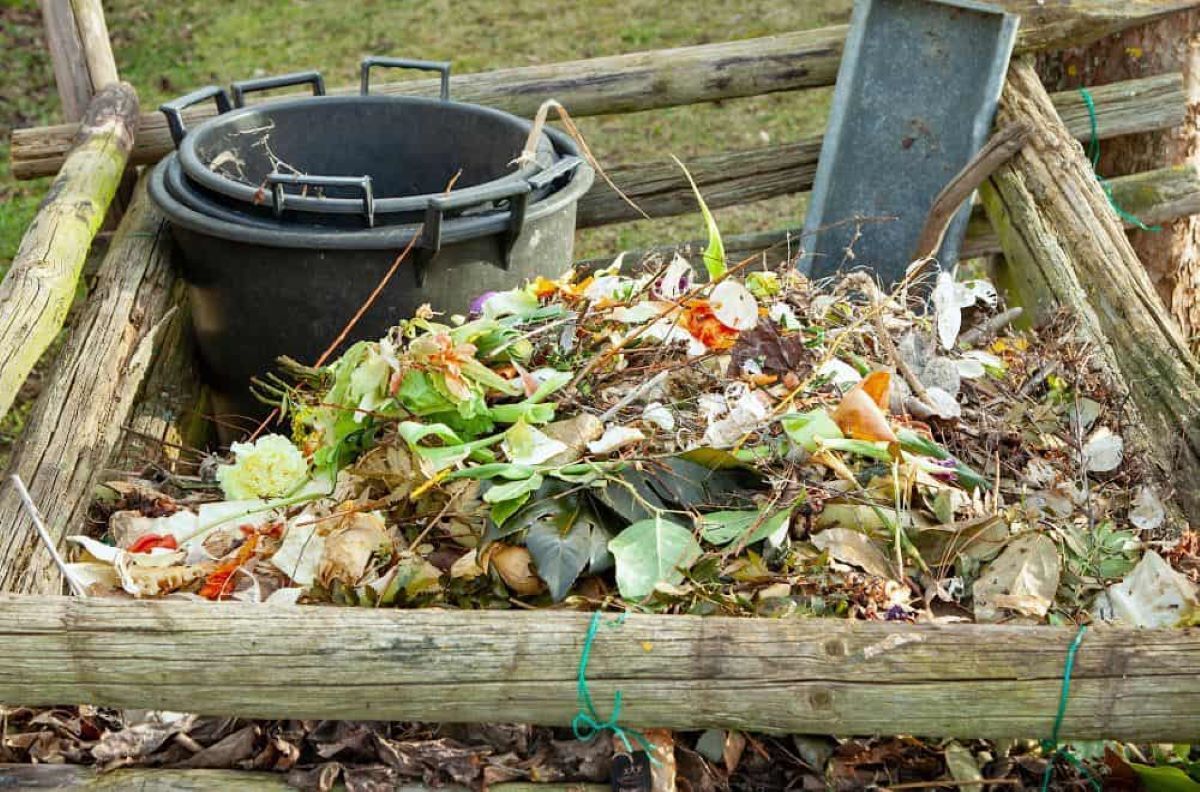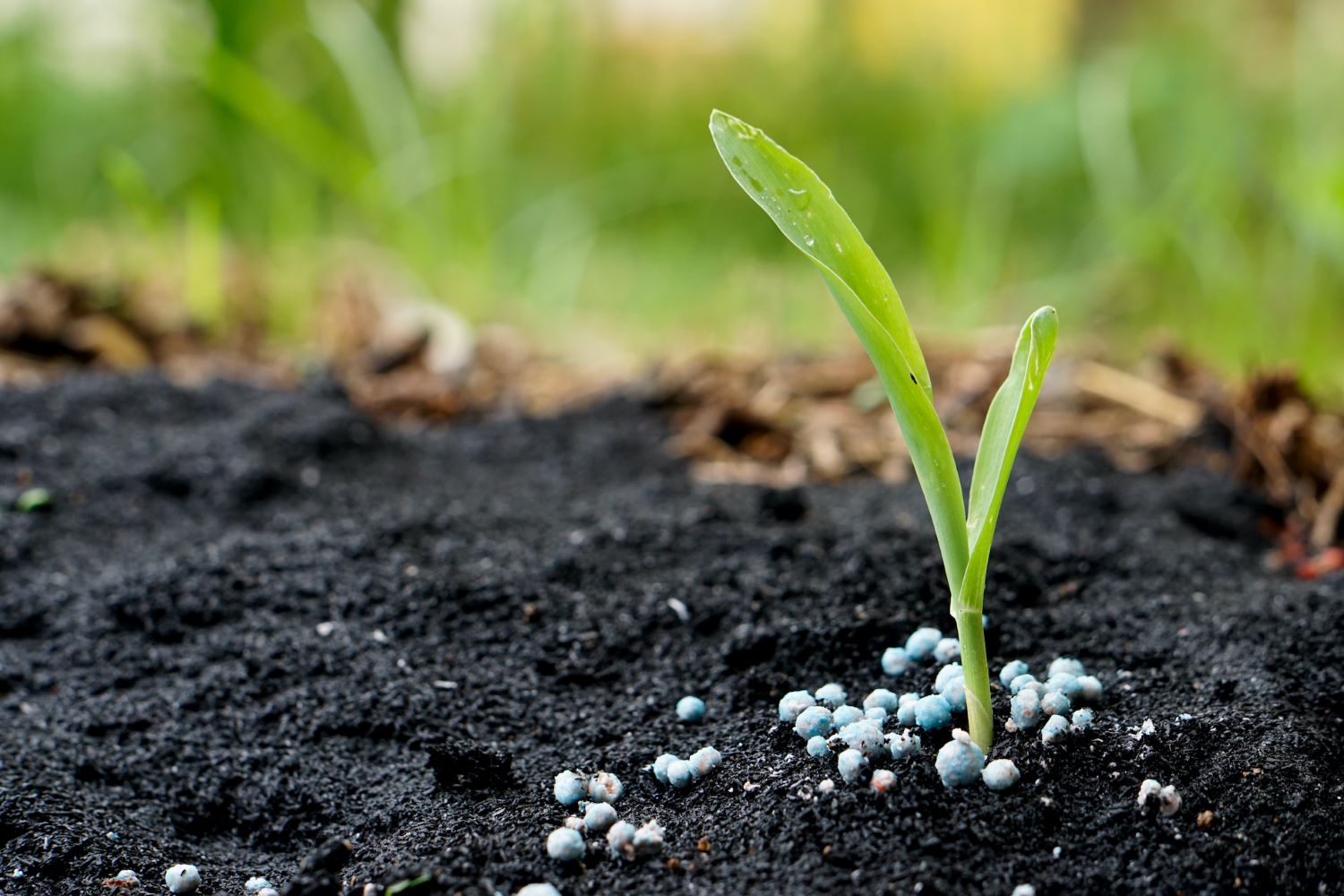Home>Gardening Basics>Getting Started>How Long Does It Take Roundup To Kill Weeds


Getting Started
How Long Does It Take Roundup To Kill Weeds
Published: December 12, 2023
Learn how to get started with Roundup and find out how long it takes for Roundup to effectively kill weeds. Discover the best practices for using Roundup to achieve optimal results.
(Many of the links in this article redirect to a specific reviewed product. Your purchase of these products through affiliate links helps to generate commission for Chicagolandgardening.com, at no extra cost. Learn more)
Table of Contents
- Understanding the Dynamics of Roundup and Weed Control
- The Science Behind Roundup’s Weed-Killing Power
- Influential Variables in Maximizing Weed Control
- Strategies for Effective and Targeted Weed Control
- Understanding the Dynamics of Roundup’s Impact on Weed Mortality
- Empowering Effective Weed Control Through Informed Roundup Utilization
Introduction
Understanding the Dynamics of Roundup and Weed Control
When it comes to maintaining a lush and vibrant garden or landscape, effectively managing weeds is a crucial aspect of the process. Weeds not only detract from the visual appeal of your outdoor space but also compete with desirable plants for essential nutrients, water, and sunlight. In the realm of weed control, Roundup has emerged as a popular and widely utilized solution. This powerful herbicide, also known as glyphosate, has revolutionized the battle against unwanted plant growth. However, understanding the intricacies of Roundup's effectiveness and the timeframe for weed eradication is essential for maximizing its potential.
In this comprehensive guide, we will delve into the multifaceted nature of Roundup, exploring the factors that influence its effectiveness and the application techniques that can optimize its weed-killing capabilities. By gaining insight into the nuanced dynamics of Roundup, you will be empowered to make informed decisions regarding weed management and achieve a flourishing outdoor environment. So, let's embark on a journey to unravel the mysteries of Roundup and uncover the secrets to successful weed control.
Understanding Roundup
The Science Behind Roundup’s Weed-Killing Power
Roundup, a widely recognized herbicide, is formulated with the active ingredient glyphosate, a potent chemical that disrupts the growth and development of plants. This herbicide works by inhibiting the activity of an enzyme essential for plant growth, ultimately leading to the systemic destruction of targeted weeds. The systemic nature of Roundup enables it to be absorbed through the foliage and transported to the roots, ensuring comprehensive eradication of unwanted vegetation.
One of the key advantages of Roundup is its broad-spectrum effectiveness, meaning it can effectively control a wide range of weed species. This versatility makes it a valuable tool for addressing diverse weed infestations, providing a comprehensive solution for weed management. Additionally, Roundup is renowned for its rapid action, often delivering visible results within a relatively short timeframe.
It is important to note that while Roundup is highly effective in combating weeds, it is crucial to use this herbicide judiciously and in accordance with the recommended guidelines. Understanding the science behind Roundup empowers users to harness its weed-killing power while minimizing the potential impact on surrounding vegetation and the environment. By comprehending the mechanisms through which Roundup operates, individuals can make informed decisions regarding its application and achieve optimal results in their weed control endeavors.
Factors Affecting Roundup’s Effectiveness
Influential Variables in Maximizing Weed Control
The effectiveness of Roundup in eradicating weeds is influenced by various factors, ranging from environmental conditions to the characteristics of the targeted vegetation. Understanding these variables is paramount in optimizing the efficacy of Roundup and achieving successful weed management outcomes.
One pivotal factor is the stage of weed growth at the time of application. For optimal results, Roundup should be applied when weeds are actively growing and in a state of robust health. This ensures that the herbicide is efficiently absorbed and translocated throughout the plant, maximizing its impact on the weed’s vital processes. Additionally, the size of the weed plays a crucial role, as smaller, younger plants are more susceptible to herbicidal treatment compared to mature, well-established weeds.
Environmental conditions, such as temperature and humidity, also significantly influence Roundup’s effectiveness. Warmer temperatures enhance the absorption and translocation of the herbicide within the plant, accelerating its weed-killing action. Conversely, extreme heat can lead to rapid desiccation of the herbicide on the plant surface, potentially reducing its efficacy. Moreover, adequate soil moisture is essential for facilitating the uptake of Roundup, ensuring that the herbicide reaches the root system and exerts its full impact.
The presence of soil residues or debris can impede the direct contact of Roundup with the weed foliage, diminishing its effectiveness. Therefore, clearing the area of debris and ensuring thorough coverage of the targeted weeds are critical for maximizing the herbicide’s efficacy. Additionally, the formulation and concentration of Roundup used, as well as the application method employed, can significantly influence its effectiveness in controlling weeds.
By considering these influential variables and implementing targeted strategies, individuals can optimize the effectiveness of Roundup, enhancing its weed-killing potential and achieving superior results in weed control efforts.
Application of Roundup
Strategies for Effective and Targeted Weed Control
The successful application of Roundup is a pivotal aspect of achieving optimal weed control outcomes. By employing strategic and meticulous application techniques, individuals can maximize the herbicide’s efficacy and ensure comprehensive weed eradication.
Prior to application, it is essential to carefully assess the target area and identify the specific weed species present. This enables the formulation of a targeted approach, tailoring the application to address the prevalent weed types effectively. Additionally, considering the growth stage and size of the weeds allows for precise timing of the Roundup application, enhancing its impact on the targeted vegetation.
Thorough coverage is paramount in ensuring the comprehensive uptake of Roundup by the weeds. Utilizing appropriate application equipment, such as sprayers with suitable nozzles, facilitates uniform and extensive coverage of the weed foliage, maximizing the herbicide’s contact and absorption. Moreover, applying Roundup during calm weather conditions minimizes potential drift and ensures precise targeting of the weeds, preventing unintended exposure of desirable plants to the herbicide.
When dealing with extensive weed infestations, implementing a systematic approach to application, such as dividing the area into manageable sections, allows for thorough and methodical treatment of the entire site. This approach ensures that no areas are overlooked, promoting consistent and effective weed control outcomes.
Furthermore, adhering to the recommended concentration and formulation of Roundup, as well as following the specified application rates, is imperative in achieving optimal results while minimizing the risk of potential environmental impact. Careful consideration of environmental factors, such as temperature and soil moisture, at the time of application contributes to the successful uptake and translocation of Roundup within the targeted weeds.
By embracing these strategic approaches to Roundup application, individuals can harness the herbicide’s potent weed-killing properties and achieve precise, targeted control of unwanted vegetation, fostering a thriving and visually appealing outdoor environment.
Timeframe for Weed Death
Understanding the Dynamics of Roundup’s Impact on Weed Mortality
After the application of Roundup, the timeframe for weed death and visible effects can vary based on several factors, including the specific weed species, environmental conditions, and the health and growth stage of the targeted plants. Understanding these dynamics is essential for managing expectations and gauging the effectiveness of Roundup in weed control.
For many annual weeds, the impact of Roundup is often swift and discernible, with visible signs of wilting and browning appearing within days of application. This rapid response is attributed to the herbicide’s systemic action, which swiftly disrupts the vital processes of the weeds, leading to their demise. Conversely, perennial weeds may exhibit a delayed response to Roundup, with visible effects becoming apparent over the course of several weeks. The extensive root systems of perennial weeds necessitate a more prolonged period for the herbicide to translocate and exert its full impact, resulting in a gradual decline and eventual death of the targeted vegetation.
Environmental factors play a significant role in influencing the timeframe for weed death following Roundup application. Warmer temperatures expedite the herbicide’s absorption and translocation within the plants, accelerating the onset of visible effects and weed mortality. Conversely, cooler temperatures may prolong the timeframe for weed death, as the herbicidal activity within the plants is slowed under such conditions.
The health and vigor of the targeted weeds also influence the speed of their response to Roundup. Weeds that are actively growing and in robust health are more susceptible to the herbicide’s effects, often succumbing to its impact more rapidly than stressed or weakened plants. Additionally, the size of the weeds at the time of application can impact the timeframe for visible effects, with smaller, younger plants typically exhibiting a swifter response compared to larger, more established weeds.
By considering these variables and observing the response of the targeted weeds, individuals can gain insights into the expected timeframe for weed death following Roundup application, enabling them to assess the effectiveness of the herbicide and make informed decisions regarding subsequent weed management strategies.
Conclusion
Empowering Effective Weed Control Through Informed Roundup Utilization
Roundup, with its potent herbicidal properties and broad-spectrum effectiveness, stands as a valuable tool in the battle against unwanted vegetation. By comprehending the intricate dynamics of Roundup and the factors influencing its efficacy, individuals can optimize its weed-killing potential and achieve superior outcomes in weed control efforts.
Understanding the science behind Roundup’s weed-killing power illuminates the mechanisms through which this herbicide disrupts the growth and development of targeted plants, paving the way for comprehensive weed eradication. By leveraging this knowledge, individuals can make informed decisions regarding the application of Roundup, ensuring precise and effective targeting of unwanted vegetation while minimizing the impact on desirable plants and the environment.
The multifaceted factors influencing Roundup’s effectiveness underscore the importance of strategic application techniques, tailored to the specific weed species and prevailing environmental conditions. By embracing meticulous application practices and adhering to recommended guidelines, individuals can harness the full potential of Roundup, achieving targeted and comprehensive weed control outcomes.
Furthermore, gaining insights into the timeframe for weed death following Roundup application enables individuals to manage expectations and assess the herbicide’s impact on targeted vegetation. By observing the response of weeds and considering the influential variables, individuals can refine their weed management strategies, ensuring optimal utilization of Roundup for long-term weed control success.
In essence, the journey to effective weed control through Roundup begins with a deep understanding of its mechanisms, influential variables, and optimal application techniques. By integrating this knowledge into weed management practices, individuals can cultivate flourishing outdoor environments, free from the encumbrance of unwanted vegetation, and embark on a path to sustainable and visually captivating landscapes.





